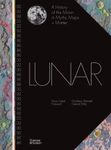By: Alan E Rubin(Author), Chi Ma(Author)
420 pages, 16 plates with colour photos and colour illustrations; 149 b/w photos and b/w illustrations, tables
![Meteorite Mineralogy Meteorite Mineralogy]()
Click to have a closer look
About this book
Contents
Customer reviews
Biography
Related titles
About this book
Meteorites are fascinating cosmic visitors. Using accessible language, Meteorite Mineralogy documents the history of mineralogy and meteorite research, summarizes the mineralogical characteristics of the myriad varieties of meteorites, and explains the mineralogical characteristics of Solar System bodies visited by spacecraft. Some of these bodies contain minerals that do not occur naturally on Earth or in meteorites. Meteorite Mineralogy explains how to recognize different phases under the microscope and in back-scattered electron images. It summarizes the major ways in which meteoritic minerals form – from condensation in the expanding atmospheres of dying stars to crystallization in deep-seated magmas, from flash-melting in the solar nebula to weathering in the terrestrial environment. Containing spectacular back-scattered electron images, colour photographs of meteorite minerals, and with an accompanying online list of meteorite minerals, Meteorite Mineralogy provides a useful resource for meteorite researchers, terrestrial mineralogists, cosmochemists and planetary scientists, as well as graduate students in these fields
Contents
1. Minerals and Meteorites: Historical Foundations and Current Status
2. Definitions and Explications
3. Brief review of Crystallography and Crystal Chemistry
4. Properties of Minerals: Explanations and Applications
5. Identification of Meteoritic Minerals in Reflected Light, by Back-scattered Electron (BSE) Imaging, and by EDS and EBSD Analyses
6. Meteorite Classification and Taxonomy
7. Mineralogy of Major Physical Components of Chondrites
8. Petrologic and Mineralogical Characteristics of Meteorite Groups
9. Cosmomineralogy
10. Formation of Meteoritic Minerals in Gas- and Dust-rich Environments
11. Formation of Meteoritic Minerals on Parent Bodies
12. Formation of Meteoritic Minerals in the Terrestrial Environment
13. The Strange Case of the Aluminum-Copper Alloys
Epilogue
References
Customer Reviews
Biography
Alan Rubin is a meteorite researcher who recently retired from the University of California, where he worked as a research geochemist. He is a fellow of the Meteoritical Society and winner of the Nininger Meteorite Award and seven Griffith Observer science writing awards. He is the namesake of the garnet mineral rubinite and the main-belt asteroid 6227Alanrubin. He has one other published book – Disturbing the Solar System (Princeton, 2004).
Chi Ma is a mineralogist at the California Institute of Technology, with research interests in nanomineralogy and the discovery of new minerals, especially those representing extreme conditions of formation. He has discovered and/or led investigations on 45 new minerals, including 14 refractory minerals from the solar nebula and 11 high-pressure minerals. The oxide mineral machiite was named in his honour.
By: Alan E Rubin(Author), Chi Ma(Author)
420 pages, 16 plates with colour photos and colour illustrations; 149 b/w photos and b/w illustrations, tables







































